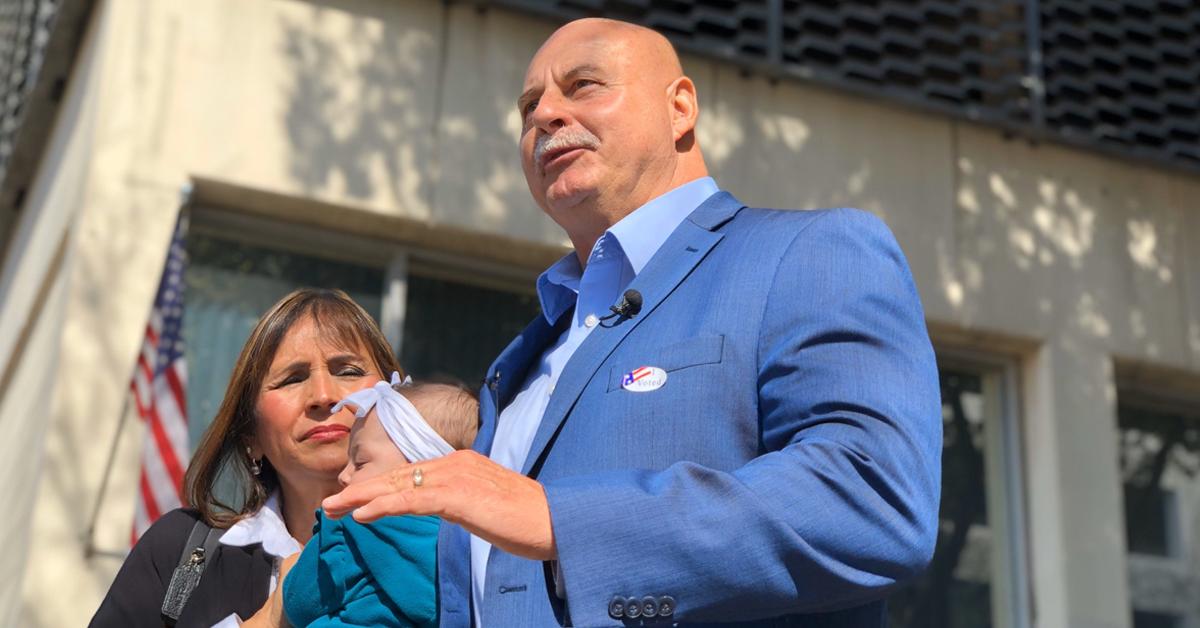The first recommendation from Fresno’s new police auditor is a doozy: Mandatory seat belt protection for all suspects being transported in police vehicles.
John Gliatta was named head of the Office of Independent Review in August. He succeeds Rick Rasmussen, whose contract ended at the end of 2016.
Rasmussen was a part-timer who had other duties in Salt Lake City.
The Rasmussen-to-Gliatta timeline means there was no police auditor (or “independent reviewer,” as some call the position) to do quarterly reports for the first half of 2017. Gliatta’s inaugural report, for 3Q 2017, is now posted on the city’s website.
Gliatta began his 19-page report with a review of the new era in local police oversight.
“The Office of Independent Review was significantly changed when Lee Brand was elected Mayor for the City of Fresno,” Gliatta wrote. “Mayor Brand amended the position of Independent Reviewer to a full time position requiring local residency.”
Gliatta noted that Brand (who took office in January 2017) also created a Citizens Public Safety Advisory Board “to enhance trust, accountability, transparency, and promote higher standards of services” in the Fresno Police Department. The board “will increase public confidence in the FPD and work to strengthen and ensure the application of equal protection under the law for all citizens in the City of Fresno.”
The board’s meetings are not open to the public. Too bad. I’d love to know what board members and Fresnans in general think of Gliatta’s seat belt recommendation.
Gliatta in his report referred to FPD Policy 306.3(c): “When applying handcuffs, the subject’s hands should be secured behind his/her back with the palms facing outward.”
Usually, the next step is taking the suspect to Fresno County jail in Downtown. Usually, that means a ride in a cop car (sometimes the vehicle is a police van). The suspect is put into the car’s back seat.
Fresno’s streets are busy. Even the most careful driver can be involved in an accident.
Gliatta wrote: “Although the procedure manual does state seat belts are mandatory, the procedure references passenger seat occupants but does not specifically state it also applies to prisoners. The section of the policy manual specifically addressing Transportation of Prisoners states members are responsible for the safety and security of the prisoners. The policy does not state seat belts are mandatory on all prisoners while being transported.”
Gliatta reviewed the policy manuals of 10 other public safety agencies. He checked in with the Advisory Committee on Highway Safety of the International Association of Police Chiefs. They all said it’s best to secure prisoners with a seat belt if the vehicle has them.
Gliatta wrote: “Regardless of how careful an officer is while transporting a prisoner, they are unable to anticipate when they will need to apply the brakes quickly to avoid an accident or a careless driver. Because almost all prisoners are handcuffed behind their back, they are unable to reduce the impact of hitting the protective screen during a sudden stop. In addition, in the event of a significant accident the unsecured prisoner could possibly be ejected.”
Though it’s not mentioned by Gliatta, the context to this issue includes the death of Freddie Gray, a 25-year-old African-American man who died in 2015 after being arrested by Baltimore police. Some have attributed his death to injuries sustained while being transported in a police van. Gray was unsecured in the van.
From a policy-making standpoint, the import of Gray’s death was the reaction by segments of the public and the Baltimore Police Department. Many people protested the incident in dramatic fashion. Some critics say Baltimore police, overwhelmed by the outcry, have since taken a more passive approach to public safety.
Baltimore has had more than 300 murders so far this year. That’s about seven times as many as Fresno has had in the same period. Baltimore’s population is 620,000. Fresno’s population is 525,000.
Here is what Gliatta called Recommendation 1: “In an attempt to reduce physical injury to prisoners and claims for those injuries, it is recommended (that) FPD Policy 901 be amended to mandate the securing of prisoners with a seat belt while the vehicle is in motion. Also, in view of the fact (that) the patrol vehicles are not equipped with audio/video recorders, the activation of a body camera should be considered when a prisoner attempts to self-inflict injury while being transported. Although the video will not be recording the prisoner, the audio will document the cause of injury and reduce, if not eliminate, future allegations by those being transported.”
I sent a text to Chief Jerry Dyer on Monday. I told the Chief that I had just one question: “How are officers to do this ‘seat belt securing’ safely?”
Dyer didn’t respond.
I did a bit of Internet surfing on Monday evening, pursuing the same question. I found a handful of comment boards addressing the issue. I didn’t participate in the give-and-take. But I got the sense that law enforcement agencies across America are well aware of the danger to officers when it comes to securing a handcuffed suspect with a seat belt.
Several commentators said they were peace officers. They said an unruly suspect can use feet, knees, head and teeth to harm an officer. They said it might take two officers to secure an unruly suspect with the seat belt. They said there are times when it’s simply not possible to secure a suspect according to department policy. In that case, they said, they have no choice but to take the gamble of transporting an unsecured suspect.
You know the possible scenario: The unruly and unsecured suspect harms himself en route to the jail; the suspect and his lawyer sue the city; there’s a great hue and cry throughout the city about police brutality/indifference; Gliatta and the Citizens Public Safety Advisory Board get involved; regardless of the Gliatta/Advisory Board judgment, the police are vilified; the buck for all this stops with the Mayor.
There’s one other possible scenario: Police officers do all they can to secure the unruly suspect; the unruly suspect is secured with a seat belt but harms one of the officers during the process; the unruly suspect gets to the jail safely.
And the public never learns of the injured officer’s professionalism.










